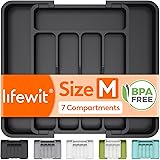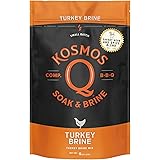In today’s fast-paced world, prioritizing wholesome, flavorful meals often feels like a luxury rather than a daily possibility. However, embracing healthy home cooking does not necessitate extensive time commitments or exorbitant budgets. This accompanying video demonstrates ingenious approaches to creating nutritious, budget-friendly dishes, proving that culinary excellence and mindful eating can indeed coexist seamlessly.
The culinary philosophy presented here champions efficiency, affordability, and maximum flavor extraction. It empowers home cooks to transform everyday ingredients into extraordinary meals, fostering a deeper connection with their food choices. We will delve into various healthy recipes, exploring their nutritional science, cost-saving benefits, and the innovative techniques that elevate simple components into memorable dining experiences.
1. Mastering the Art of Affordable, Plant-Forward Flatbreads with Homemade Hummus
Creating vibrant, satisfying meals from pantry staples is a testament to resourceful healthy home cooking. The featured chickpea flatbreads with homemade hummus and slaw exemplify this philosophy perfectly, offering a brilliant summertime option that requires minimal cooking and maximizes nutritional impact. This recipe ingeniously utilizes tinned chickpeas, an excellent source of plant-based protein and dietary fiber, contributing significantly to daily vegetable intake while remaining exceptionally cost-effective.
Spinach-Infused Flatbreads for Enhanced Nutrition
The innovation begins with incorporating spinach directly into the flatbread dough, transforming a conventional carb into a nutrient-dense foundation. By blending most of a bag of spinach with 100 grams of yogurt and a tablespoon of starchy water, the dough achieves a vivid green hue and an incredibly fluffy texture. Using 200 grams of self-raising flour streamlines the process, as the leavening agent is already present, ensuring perfectly risen flatbreads in approximately two minutes per side on a medium-high heat pan. This unexpected vegetable integration highlights a creative way to boost micronutrient intake.
Elevating Hummus with Economical Alternatives
While traditional hummus typically includes tahini, this recipe provides an accessible and equally delicious alternative: a non-sweetened tablespoon of peanut butter. This clever substitution ensures that even without specialty ingredients, a silken, gorgeous hummus can be prepared quickly in the same “dirty” liquidizer, minimizing cleanup. Incorporating one and a half lemons provides a fresh, zingy flavor profile, while a pinch of salt, pepper, and a drizzle of olive oil complete this versatile dip. This approach not only saves time but also makes high-quality ingredients more accessible to a broader audience, demonstrating effective budget-friendly cooking.
Crafting a Refreshing Slaw with Textural Elegance
The accompanying homemade slaw elevates the entire dish, providing essential crunch and freshness. Instead of simply grating, using a vegetable peeler to create elegant strips of carrot and apple introduces a delightful textural contrast. A small handful of spinach, along with the remaining half of the lemon squeezed over the apples, prevents browning and adds a vibrant citrus note. Drizzled with a touch of olive oil and seasoned with salt, this simple slaw perfectly complements the rich hummus and soft flatbreads, creating a balanced and flavorful ensemble. This meal impressively comes in at under a pound per portion, making it an incredibly affordable and healthy option.
2. Reinventing the Classic: A Healthier Caesar Salad with Lean Protein
The Caesar salad, a perennial favorite, often carries a reputation for being calorie-dense due to its traditional dressing. This innovative rendition reengineers the classic, delivering a dish that is both satisfyingly rich in flavor and significantly lighter, boasting approximately half the calories of a regular Caesar salad. The transformation primarily stems from a brilliant dressing swap and smart protein preparation, embodying advanced healthy home cooking principles.
Innovating the Dressing: Yogurt as a Game-Changer
The cornerstone of this healthier Caesar lies in its dressing, where good quality organic yogurt replaces mayonnaise. This switch dramatically reduces saturated fat content by up to 90%, while still maintaining a creamy texture and delivering a cleaner, more delicious flavor. The dressing integrates four large tablespoons of zero-fat organic yogurt with a teaspoon of Worcestershire sauce, half a teaspoon of English mustard, finely sliced anchovy fillets, lemon zest, the juice of half a lemon, and a tablespoon of white wine vinegar. Two tablespoons of cold-pressed extra virgin olive oil and Parmesan cheese complete this umami-rich emulsion. This scientific approach to ingredient substitution ensures nutritional superiority without compromising taste, crucial for sustainable healthy eating habits.
Lean Chicken and Crisp Croutons: Optimized Preparation
For the protein component, two skinless chicken breasts, each around 120 grams, are tenderized by flattening with a fist, which not only speeds up cooking but also ensures a more succulent result. Cooking the chicken with a tablespoon of seasoning from the anchovy tin and a sprig of rosemary for about four minutes per side yields perfectly juicy, flavorful meat. Skinless chicken breasts reduce the fat content by approximately half compared to bone-in, skin-on cuts. Concurrently, bread cubes for croutons are toasted in the same pan, absorbing natural fats from the chicken and achieving a hot, crispy texture without additional oil, contributing to the dish’s overall lower caloric density and enhanced flavor profile.
Vibrant Vegetables for Enhanced Micronutrient Intake
The salad base features a generous amount of finely sliced romaine lettuce, complemented by chicory for a subtle bitter note that harmonizes with the Parmesan. A mandoline makes quick work of thinly slicing humble cauliflower and red onion, transforming everyday vegetables into elegant, texturally appealing components. This meticulous preparation ensures a visually stunning and nutritionally balanced salad, rich in fiber and essential vitamins. This healthy Caesar salad exemplifies sophisticated healthy home cooking, demonstrating that dietary adjustments can lead to both superior taste and improved well-being.
3. Embracing Ancient Grains: A Vibrant South American Quinoa Brunch
For those seeking a healthful, colorful, and highly nutritious start to their day or a light summer meal, a South American-inspired quinoa brunch bowl offers an exceptional option. This dish spotlights quinoa, an ancient grain originating from Bolivia and Peru, renowned for its incredible nutritional profile. Quinoa is naturally low in fat, remarkably high in iron and zinc, and entirely gluten-free, making it an ideal cornerstone for expert healthy home cooking.
Perfecting Quinoa Texture and Flavor
The preparation of quinoa is crucial for achieving its optimal light and fluffy texture. After boiling in water for approximately 15 to 20 minutes until the seeds swell and a tiny shoot emerges, draining and laying the quinoa on a tray allows residual heat and steam to further fluff it. A light drizzle of olive oil, a squeeze of lemon juice, and a pinch of salt season the quinoa, transforming it into a versatile base suitable for both sweet and savory applications. This meticulous cooking technique unlocks the grain’s full potential, highlighting its delicate flavor and texture.
Crispy Black Beans and Fresh Accoutrements
Adding a textural contrast and a boost of protein, crispy black beans are quickly fried in a hot pan with a pinch of cumin and salt until they puff and crack, resembling small peanuts. These offer a delightful crunch against the soft quinoa. The dish is further enhanced with fresh components: half an avocado for healthy monounsaturated fats, colorful tomatoes, and a vibrant herb mix of mint and coriander. Thinly sliced spring onions and a unique chili vinegar, made by lightly sweetening and pickling sliced chilies with vinegar, add layers of flavor and a gentle heat. This combination not only creates a visually appealing dish but also a micronutrient powerhouse.
Nutritional Powerhouse for Sustained Energy
This quinoa brunch is a masterclass in combining ingredients for maximal nutritional benefit. Quinoa provides all nine essential amino acids, making it a complete protein. Black beans contribute significant dietary fiber, aiding digestion and promoting satiety. Avocado supplies beneficial omega-3 fatty acids and vitamins, while the fresh vegetables and herbs deliver a spectrum of antioxidants. This thoughtful assembly underscores the principles of expert healthy home cooking, providing sustained energy and supporting overall health.
4. Grilling for Health: Succulent Pork with Marinated New Potatoes and Super Greens
Creating a truly delicious and healthy main course often involves smart cooking techniques that enhance flavor while minimizing unhealthy fats. This char-grilled pork dish, accompanied by marinated new potatoes and a medley of super greens, stands as an exemplar of expert healthy home cooking. It emphasizes the use of affordable, high-welfare lean pork and nutrient-dense vegetables, proving that indulgence can align perfectly with wellness goals.
Flavorful Pork Tenderization and Grilling
The preparation of free-range pork, an affordable and lean high-welfare meat, begins with a tenderizing process. Placing the pork between greaseproof paper and gently bashing it not only tenderizes the meat but also allows for quicker cooking. A simple yet potent marinade is crafted using a pestle and mortar, combining thyme (or rosemary), salt, pepper, a clove of garlic, a tablespoon of olive oil, and four scrapes of lemon zest. Rubbing this aromatic blend onto the pork infuses it with mega flavor. Grilling the lightly oiled pork on a dry, hot griddle pan for just one minute per side ensures beautiful char marks and a juicy interior, avoiding overcooking and preserving the meat’s natural succulence, a key aspect of healthy cooking strategies.
Nutrient-Boosting Potatoes and Greens
New potatoes, rich in vitamin C primarily located in their skins, are boiled with mint stalks to infuse a subtle freshness. For the dressing, half a lemon’s juice is combined with fresh mint leaves (central leaves for salad-like texture, larger leaves for flavor), half a chili, one tablespoon of extra virgin olive oil, and 20 grams of Pecorino cheese. The Pecorino acts as a natural seasoning, replacing additional salt. This dressing not only enhances flavor but also aids in nutrient absorption; the olive oil helps absorb fat-soluble vitamins like Vitamin K found in peas and broad beans (80 grams each, counting as one of your five a day), while lemon juice boosts the absorption of Vitamin C from potatoes and other vegetables. This synergistic approach highlights the science behind expert healthy home cooking.
A Medley of Super Greens for Optimal Health
The dish features a vibrant mix of super greens, including 80 grams of sprouting broccoli, frozen peas, and broad beans, all contributing significantly to daily nutritional requirements. Frozen vegetables are highlighted for their high nutrient content, being picked and frozen at their peak. These greens require only two minutes of cooking before being dressed with the mint-chili-Pecorino mixture. Served alongside the juicy, charred pork and marinated new potatoes, this dish offers a kaleidoscope of colors, textures, and flavors. A final sprinkle of fresh mint leaves and a light grating of Pecorino elevates the presentation and taste, solidifying its place as a cornerstone of innovative and truly healthy home cooking.
5. Optimizing Meal Prep: Innovative Jam Jar Salads for On-the-Go Nutrition
For busy individuals striving to maintain healthy eating habits throughout their workday, jam jar salads offer an elegant and practical solution. This meal prep strategy allows for the creation of delicious, nutritionally balanced meals that remain fresh and vibrant until lunchtime. By understanding the principles of layering, these salads prevent sogginess and ensure all elements of a balanced plate are present, typically staying under 600 calories each – a remarkable feat for expert healthy home cooking.
The Science of Layering for Optimal Freshness
The fundamental principle behind successful jam jar salads is strategic layering. The dressing, often a blend of olive oil, zero-fat organic yogurt, horseradish, and lemon juice, is placed at the very bottom of the jar. While olive oil contains approximately 120 calories per tablespoon, pairing it with zero-fat yogurt allows for a rich flavor profile without excessive caloric intake. This bottom layer prevents other ingredients from becoming soggy. Above the dressing, sturdy, colorful ingredients such as grated raw beets are added, which won’t bleed color into other components besides the initial carb layer. This meticulous order guarantees optimal freshness and appeal.
Complex Carbohydrates and Nutrient-Dense Layers
Following the dressing and sturdy vegetables, a layer of complex carbohydrates provides sustained energy. Pearl barley is a standout choice for its British heritage and slow-release energy properties, keeping one full for longer. Other excellent options include rice, whole wheat couscous, or pasta, with about 75 grams typically providing an ideal portion. Subsequent layers consist of two to three servings of fruits and vegetables, protein sources like nuts or lean meats, and crunchy elements such as poppadoms or seeds at the very top. This structure ensures a comprehensive nutritional profile, supporting sustained energy levels and overall well-being. This methodical approach is vital for effective and consistent healthy home cooking and meal planning.
British-Inspired Jam Jar Salad: A Practical Example
A British-inspired jam jar salad exemplifies this layering technique. It begins with the zero-fat yogurt and horseradish dressing at the base. Grated raw beets follow, providing amazing color and vital nutrients. Pearl barley forms the complex carbohydrate layer, releasing energy slowly to prevent mid-afternoon slumps. Subsequent additions might include roasted chicken, hard-boiled eggs, or other lean proteins, followed by a mix of leafy greens and crunchy seeds or nuts on top. This grab-and-go meal takes no more than three minutes to assemble once ingredients are prepped, making healthy eating effortlessly integrated into busy schedules. This innovative strategy underscores the practicality and versatility of healthy home cooking, transforming daily nutrition into an achievable goal.










